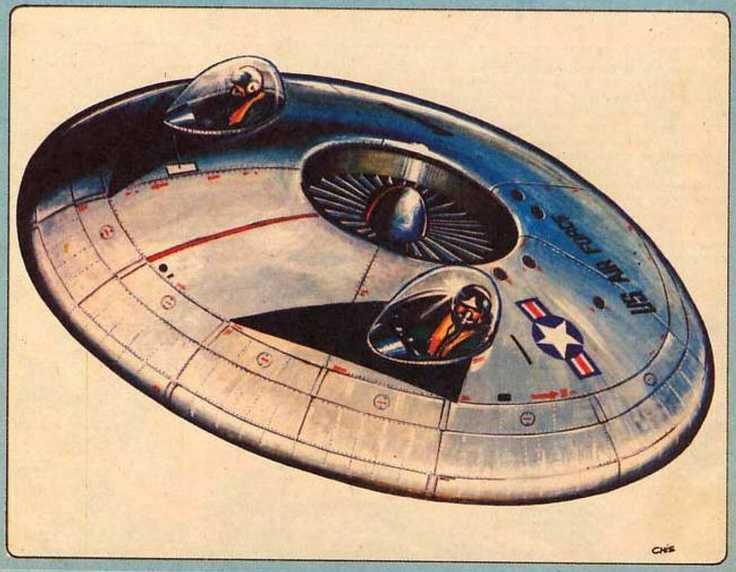
With UFO sightings becoming ever more common in the 1950s the U.S. military thought they would create their own. What they got was a vertical take-off and landing VTOL craft designed by the A.V. Roe (AVRO) Aircraft Ltd company out of Canada. This flying saucer was eventually designated the VZ-9 Avrocar after having names such as WS-606A, Project 1794, and Project Silver Bug.
Now that they worked out a name, they only had to get the darn thing to do what they wanted.
The Air Force wanted an aircraft that could take off from short runways (they were afraid that WW3 would start with nukes destroying air fields), hover beneath enemy radar, and then accelerate to fighter aircraft speeds. The Army wanted a vehicle more like a cross between a helicopter and a jeep. AVRO said they could make this craft could do both.
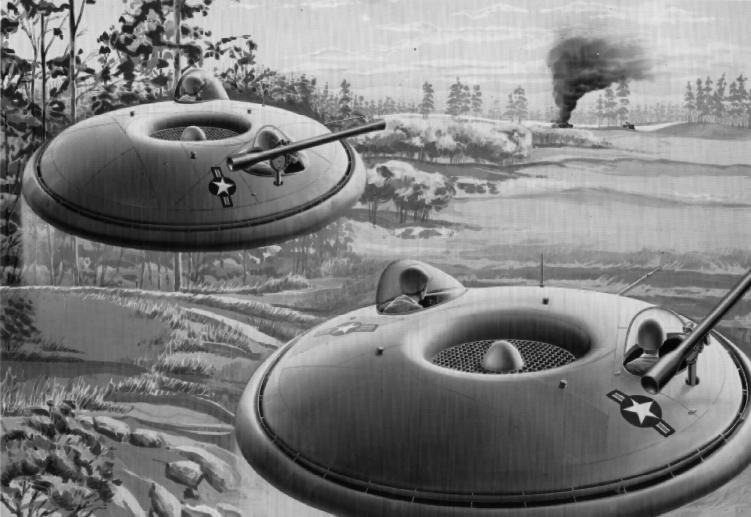
The company sold them a story that this craft could reach heights of 10,000ft, travel at speeds up to 300mph, and have a range of nearly 1,000 miles. None of that was true, but man did it look futuristic! The military brass wanted their own flying saucers to shame the commies, so they provided funding for further research.
Two prototypes were built in 1959, and problems with its operation became apparent immediately. The exhaust would get sucked back into the intake, and that oxygen deprived air would reduce engine thrust. The ducts leaked and the central fan did not provide lift over its entire area, just a small section.
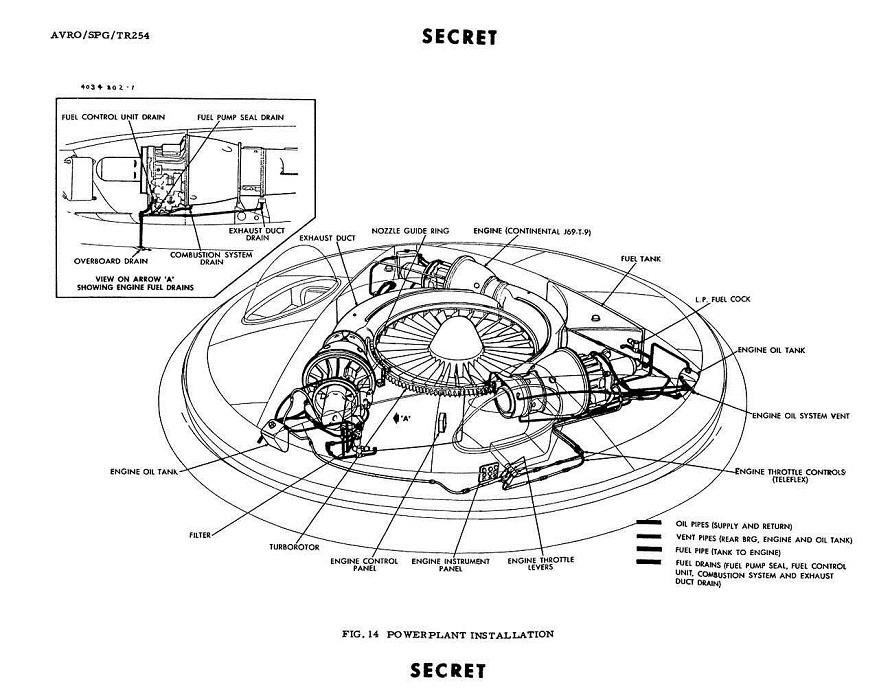
Basically the effect they were trying to produce was the same as a hovercraft, but much greater. It had a turborotor on top which would then feed air to three engines. The exhaust would be directed downward for lift and out the sides for directional control.
It also didn’t help that the test pilots said that controlling the VZ-9 was “like balancing on a beach ball”. When it was flown higher than about 3 feet off the ground it would become unstable because it lost the cushion of air it was riding on. One of the designers called this dilemma ‘tree trunking’, when the craft attempted to obtain altitude the air formed into a single narrow column. When the air was momentarily directed to the sides, part of that column would lessen. To stop that from happening the pilot would direct air to the opposite side and the same effect would occur there. Well this just ended up creating a never ending flight wobble.
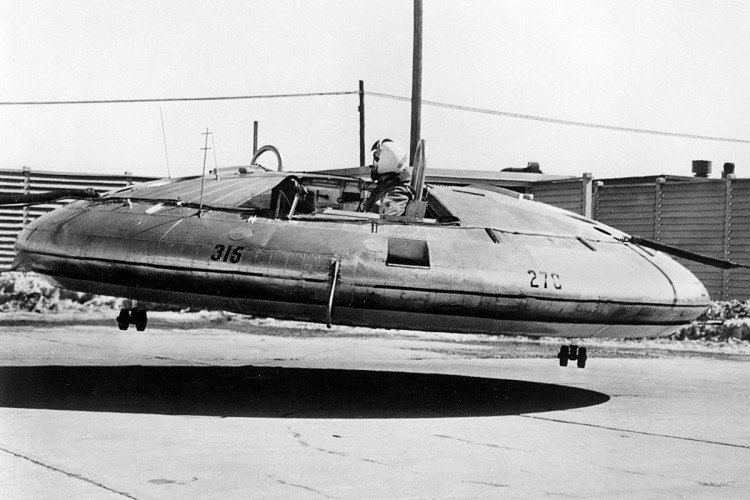
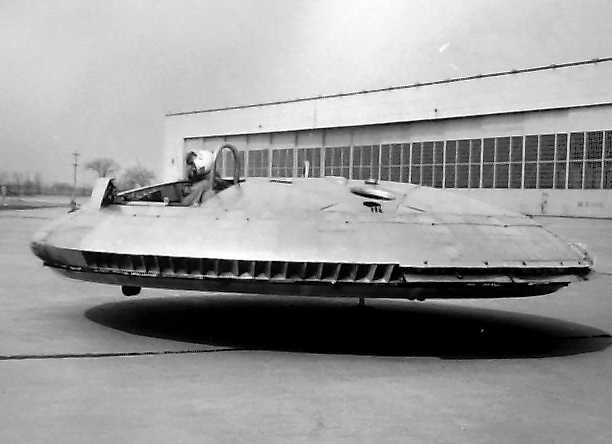
Many modifications were attempted to stop or lessen the problems that this craft had, none worked out too great. After years of decreasing funding on the project, it was finally cancelled in 1961. It met no performance metrics and in addition to it not being stable above a height 3ft, it was also extremely hot and noisy.
If you want to see one of these babies in person, you can visit the National Museum of the United States Air Force in Dayton, OH.
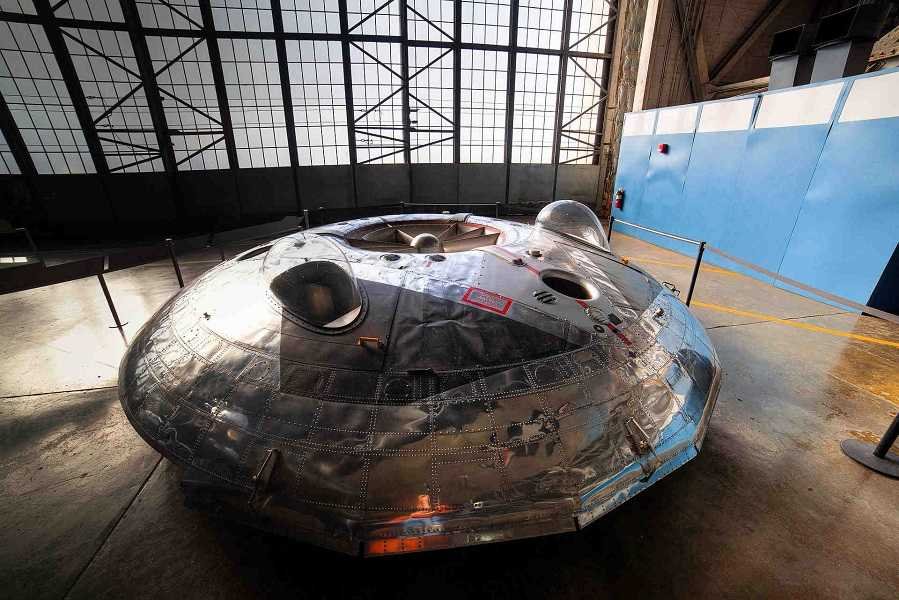
General characteristics:
Crew: 2
Diameter: 18 ft (5.5 m)
Height: 3 ft 6 in (1.07 m)
Empty weight: 3,000 lb (1,361 kg)
Max takeoff weight: 5,560 lb (2,522 kg)
Powerplant: 3 × Continental J69-T-9 turbojet engines, 660 lb thrust each
Performance
Maximum speed: 300 mph (483 km) (estimated), 35 mph (56 km/h) (actual)
Range: 995 mi (1,601 km) (estimated), 79 mi (127 km) (actual)
Service ceiling: 10,000 ft (3,048 m) (estimated), 3 ft (0.91 m) (actual)
I hope you've enjoyed my latest quick read series: Historical Misfits!
Be sure to follow @getonthetrain to read my next one!
(Source) Img Img
